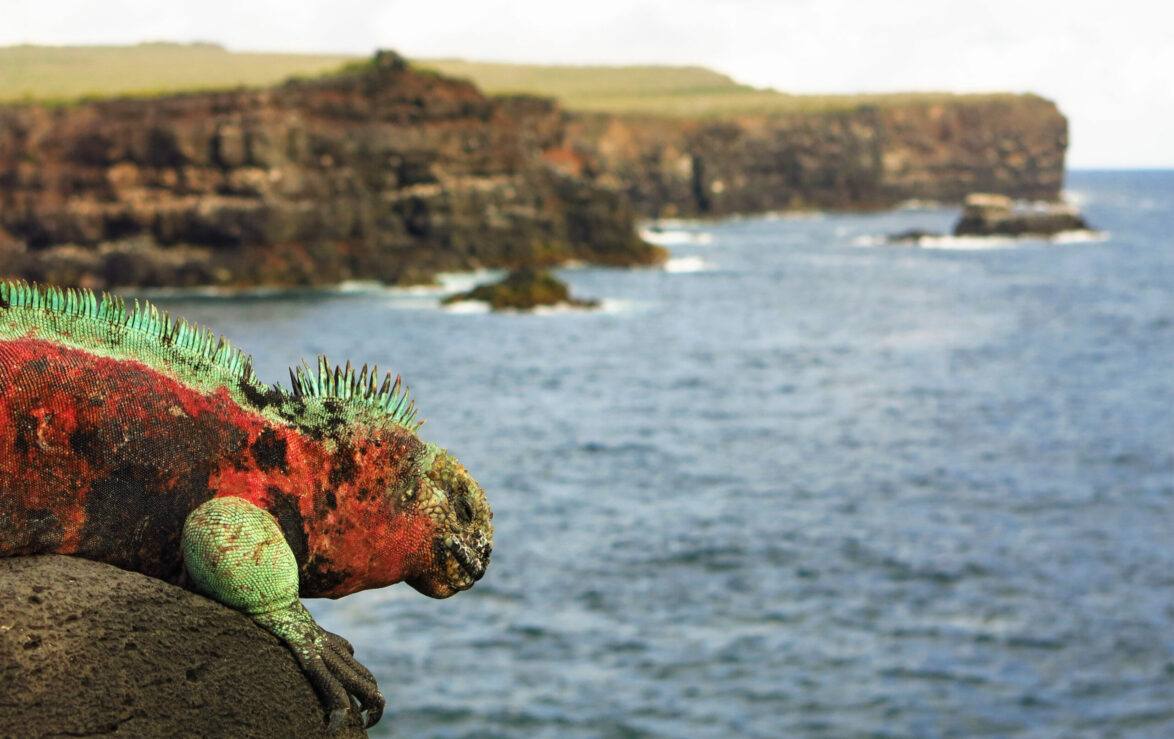

The Christmas iguana
The marine iguana subspecies on Española island is particularly colourful, flushing red and green during the breeding season, which has given it the nickname the 'Christmas iguana'.
Did you know that marine iguanas come in a range of colours?
The marine iguana is the only lizard in the world with the ability to live and forage at sea and is endemic to the Galapagos Archipelago. There are 11 very similar subspecies, each from different islands. The largest subspecies grows to over a metre in length, found in the north of San Cristobal island, and nicknamed the ‘Godzilla’ marine iguana (Amblyrhyncus subcristatus godzilla).
Adult marine iguanas are black for most of the year, however the males change colour during the mating season – with different subspecies adopting different colourations. On Santa Cruz they are red and black; on Fernandina they become dull green and brick red, and on Española they are most colourful, turning bright green and red. This has led to the Española marine iguanas earning the nickname ‘Christmas iguana’.

The Española marine iguana (A. c. venustissimus) is believed to have diverged from the other subspecies in Galapagos for a number of reasons. The island’s geography appears to be an important factor, since the southern shore, where the most abundant algae (the iguana’s main food source) is found, consists of steep cliffs rather than low-lying shoreline. This means that good breeding sites are in short supply, and there is greater competition for these sites than on other islands. Brighter colouration in marine iguanas is associated with greater aggressiveness, recognised by other iguanas, so the more brightly coloured males tend to secure the best breeding sites. Similarly, the females have to compete for nesting sites, which is not the case on other islands.
Española’s small size and location in the south east of the Archipelago, combined with the ocean currents, means that it would be very difficult for marine iguanas to travel to and from other islands, which is thought to be another reason why the colouration of the Española subspecies is so distinctive.

One final fun fact about the Española marine iguana is that the breeding season for marine iguanas runs from December to March, and the nesting season between January and April. This time of year is when the iguanas’ colours are at their brightest, meaning that they appear especially festive around Christmas!

Marine iguana Christmas cards
These fun Galapagos Christmas cards feature the amazing Galapagos marine iguana. The inside reads “Season’s Greetings | Felices Fiestas” and the cards come in a pack of ten with envelopes, wrapped in clear, biodegradable cornstarch bags.
Iguanas From Above
Iguanas from Above is an innovative project that combines drone technology with citizen science to monitor the health of marine iguana populations in Galapagos.
Related articles


Project Update: Iguanas From Above

Conservation in the digital age – drones in Galapagos


